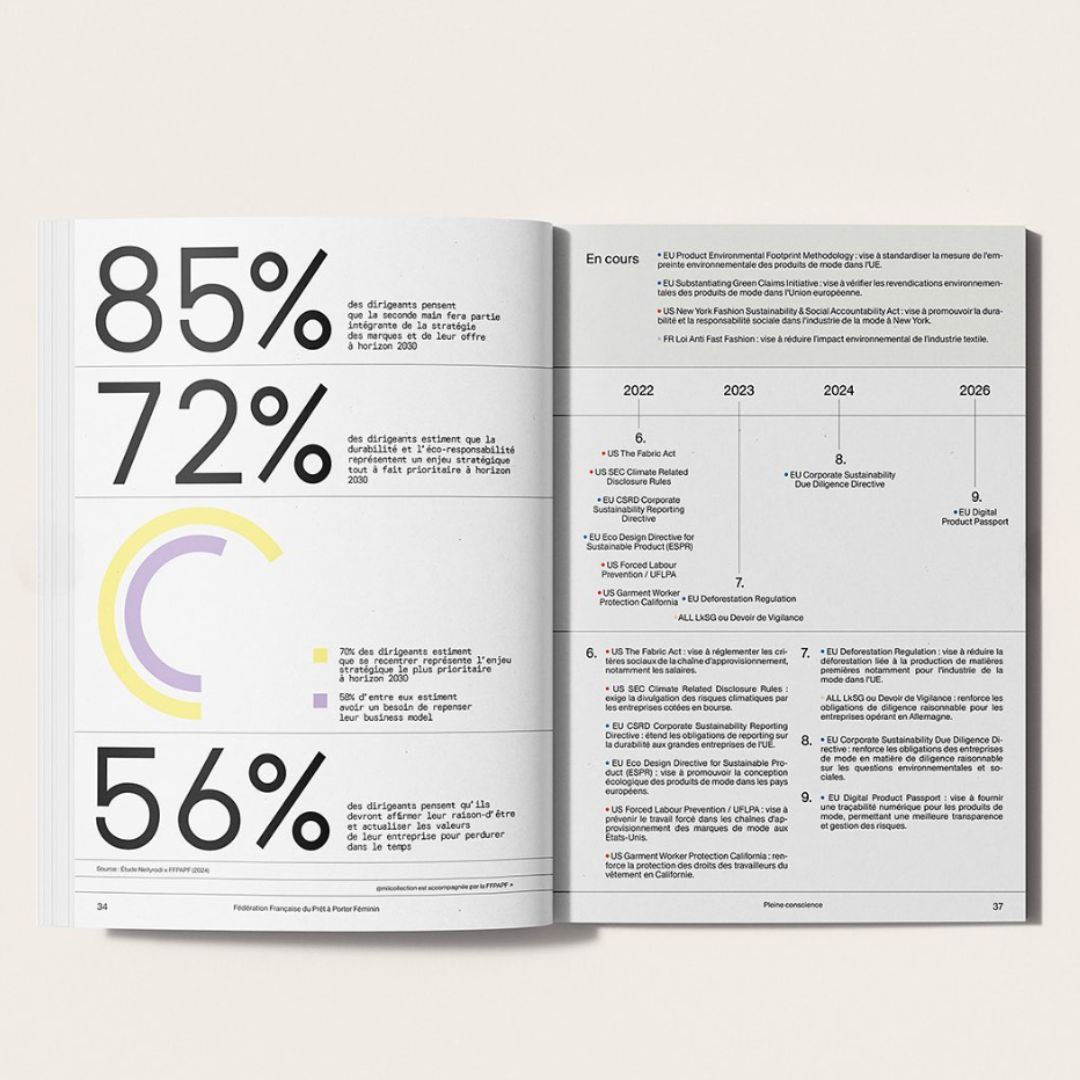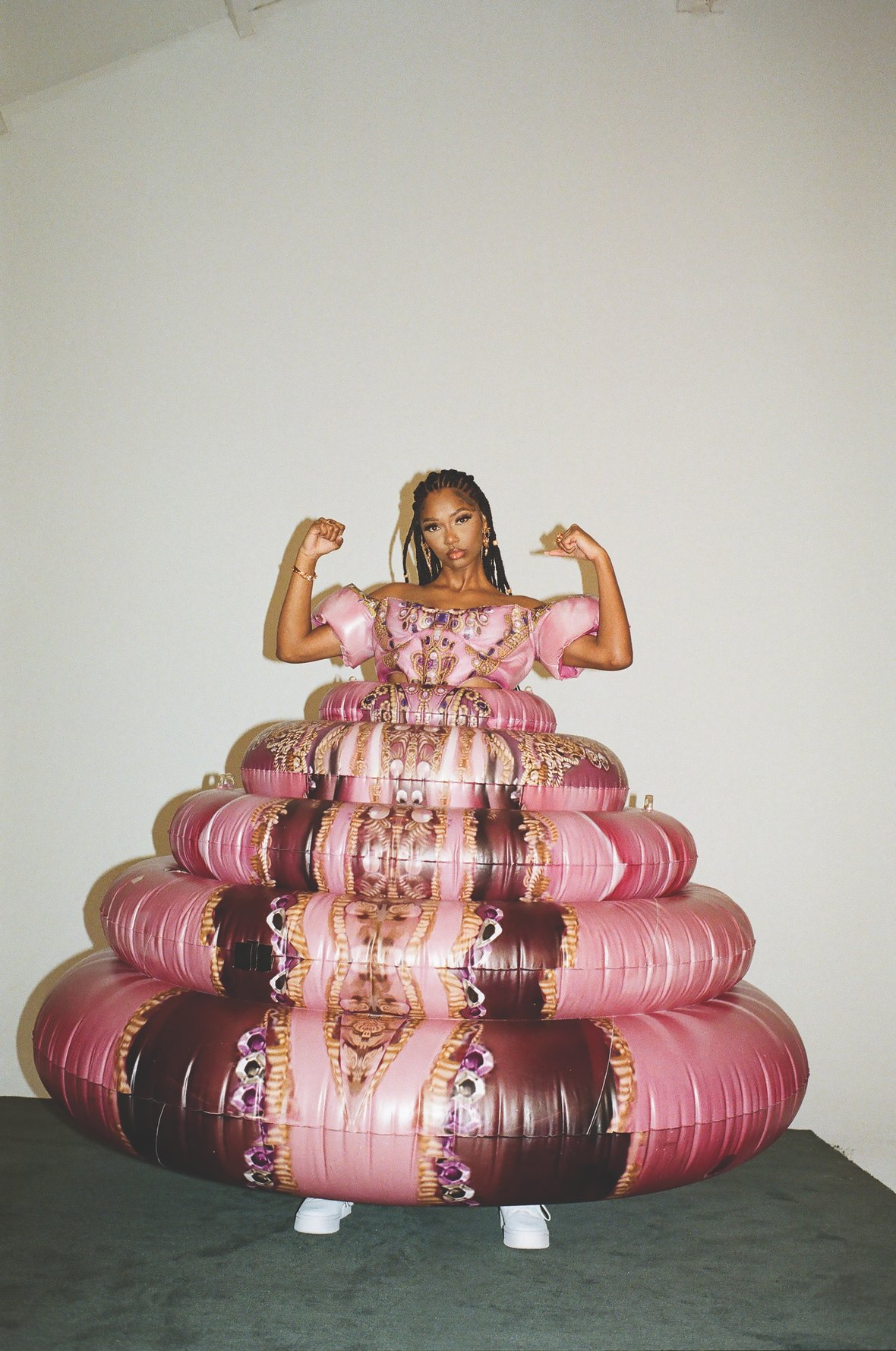Since its creation in 2017, The Good Goods has established itself as a unique media and creative studio, dedicated to transforming the fashion, textile, and luxury industries.


Launched in summer 2024, the Flair concept by the Federation of Women’s Ready-to-Wear has a simple goal: “to tackle the fashion challenges of tomorrow.” Presented to the entire industry in the form of a white paper, this innovative concept informs and highlights the ongoing transformations in a sector undergoing a global overhaul and deep reflection.
Fashion, Ready-to-Wear, and “Neo-Propaganda”
Inspired by Edward Bernays’ book Propaganda, recognised as one of the “founding fathers of public relations,” the “neo-propaganda” concept acknowledges the end of a dominant advertising model, which was characterised by excessive communication and manipulation of the public. With this comprehensive overhaul of the advertising system, brands—and the fashion industry more broadly—are questioning their new roles. How can they reinvent their discourse and brand logic?
In 2024, a brand represents a vast realm of imagination, communication, and creativity that must be identifiable and comprehensible to the public, so visibility in the market is crucial. According to a FLAIR study, 67% of executives see increasing brand awareness and visibility as a top priority. In an increasingly competitive market, polarised between luxury and ultra-fast fashion, being noticed remains one of the major challenges for brands, which must find their proper positioning, control their messaging, and update their values.
As seen with the rise of TikTok, authenticity is key to a brand’s success, and such unfiltered influence is redefining communication practices. Beyond a strong and unique identity, a brand must remain relatable to consumers while continuing to inspire them. Brands like Sézane, Carne Bollente, and The Frankie Shop manage to strike a perfect balance with their communities. Others opt for transparency, openly communicating the challenges of entrepreneurship. This strategy pays off when the audience perceives it to be genuine.
Some brands also prioritize entertainment, reminiscent of the retailtainment trend from the 1980s and 1990s, where stores offered entertainment to enhance the shopping experience. Today, we’re witnessing the rise of “fashiontainment,” where a brand must become a source of entertainment in its entirety. Sportswear brands like Nike and Adidas are pioneers in this domain, but more recently, Lena Situations’ Hôtel Mafouf highlights the growing importance of entertainment in shaping modern brand identities.

Challenges and New Horizons: Mindfulness and the Data Revolution
In an industry about to face a moral reckoning, 70% of executives identify sustainability and eco-responsibility as strategic priorities by 2030, so second-hand models and innovative business practices are increasingly central to entrepreneurs’ discussions. Key themes like diversity, equity, and inclusion are driving a more ethical and responsible fashion sector, and the industry is also addressing issues such as racism, gender equality, and cultural appropriation, which have long affected many brands. The Federation has published a guide to help open dialogue on these often-taboo subjects.
The consensus is clear: managing a brand today is vastly different from 10 or 20 years ago. Among the new rules of fashion, the data revolution is a tangible and vital shift, with fifty percent of fashion executives highlighting the importance of speed and agility, especially in production. Similarly, 55% see responsiveness and flexibility as critical to adapting to the increasing digitisation of the industry. Indeed, digitalisation and data management have become strategic priorities, requiring businesses to rethink their models and adopt a holistic approach to data architecture.
The integration of 3D technology symbolises the ongoing data revolution and is reshaping the fashion business for good. From production to pattern-making, every facet of the industry is affected. Brands like Camper demonstrate how 3D technology enhances productivity and agility. Another critical, yet less-discussed, data-related issue in the fashion industry is cybersecurity- as cyber threats like hacking and data theft become more prevalent, brands must proactively address these risks by rethinking how they protect their data.
Want to learn more? Download Flair

Since its creation in 2017, The Good Goods has established itself as a unique media and creative studio, dedicated to transforming the fashion, textile, and luxury industries.


With the arrival of the latest edition of our fair this September, Who’s Next is ramping up its dynamic spirit with the introduction of LOUD, a new space designed to echo the vibrancy of our creative industries.

Villa Beauté’s selection’s getting a fresh look and promises exceptional experiences. Innovative, ethical, and cutting-edge, our leading brands and new arrivals rewrite the rules of wellness and beauty…

For this edition of IMPACT alongside Who’s Next, the association will present its new collaborative workshop concept: Mode et Impacts.